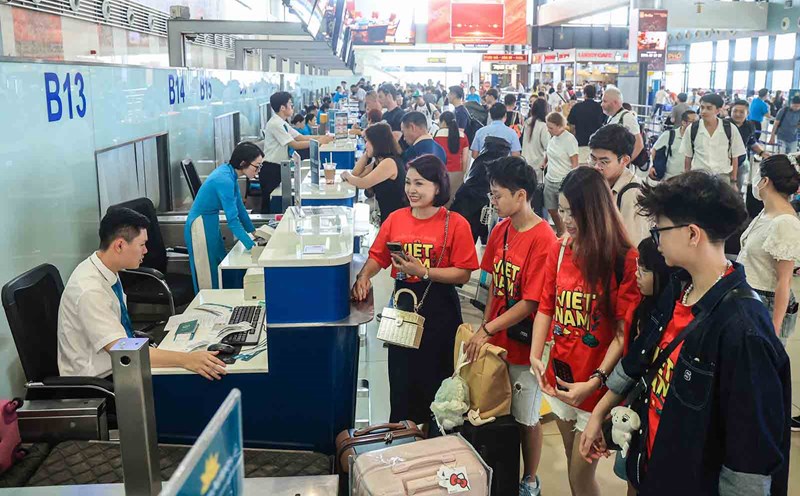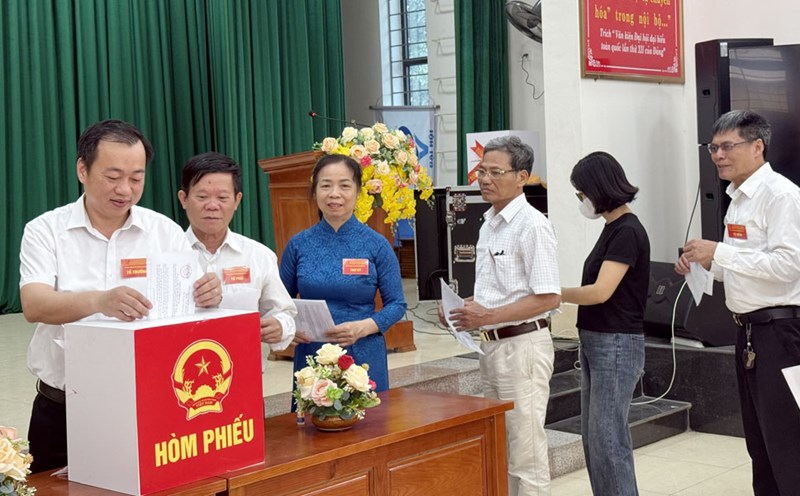Green credit: Financial lever for sustainable transformation
Green credit is a financial tool designed to support environmentally friendly projects, thereby promoting the green transformation process and towards sustainable development. The United Nations Environment Program (UNEP) emphasizes that green finance, including green credit, is the process of guiding capital flows from the public and private sectors into areas that support sustainable development, while actively managing environmental and social risks.
Both the World Bank and UNEP agree that the core point of green credit is not only the provision of capital, but also the requirement to strictly comply with environmental and social standards throughout the project life cycle. This ensures that credit sources create a practical and sustainable impact on the environment, while helping businesses access long-term loans at more reasonable costs.
Green credit plays a role as a "catalyst" to promote the green transformation of the economy, especially in the private economic sector. Through preferential mechanisms on interest rates and loan conditions, green credit encourages businesses to invest in clean technology, upgrade energy-saving production lines and implement environmentally friendly projects.
On the other hand, businesses operating in resource-intensive or high-emission sectors will have more difficulty accessing credit or having to accept higher capital costs. This mechanism forces economic entities to consider adjusting production and business models towards a more sustainable direction to receive incentives.
In recent years, Vietnam has made many clear strides in promoting green credit through the system of credit institutions and financial institutions. The State Bank of Vietnam (SBV) has proactively issued many policies and guiding documents to encourage the development of green credit, while integrating environmental and social factors into credit granting activities.
In parallel, the SBV has coordinated with international organizations to develop a list of 12 priority green areas, and at the same time instruct credit institutions to compile green credit statistics, thereby initially establishing a database to serve policy management. The Handbook for Environmental - Social Risk Assessment has been developed to apply to 15 high-risk economic sectors, helping to improve the capacity of commercial banks to assess risks and manage credit.
In particular, Circular No. 17/2022/TT-NHNN (effective from June 1, 2023) marks an important step forward in institutionalizing the requirement to integrate environmental protection into credit activities. The Circular clearly stipulates the responsibility of credit institutions in identifying, evaluating and managing environmental and social risks, while encouraging credit granting for projects that meet green criteria.
In addition to green credit, the Ministry of Finance has also taken the first steps in encouraging the development of the green bond market. Decree No. 95/2018/ND-CP regulates the issuance of government bonds and local government bonds for environmental purposes; at the same time, Circular No. 101/2021/TT-BTC stipulates a fee preferential mechanism for green bond issuance activities, to reduce costs and encourage issuing organizations to participate in the market.
On the side of the banking system, many commercial banks have proactively established an ESG Steering Committee, built a green banking strategy and integrated environmental - social risk management into credit activities and overall risk management. According to updated data by 2023, 19 credit institutions (CIs) have developed environmental - social risk management strategies, and 10 CIs have designed credit products specifically for the green sector. Some major banks have implemented preferential interest rate programs for green projects, demonstrating the positive response to the sustainable development orientation of the banking industry and the Government.
By the end of 2024, 100% of domestic commercial banks had issued internal regulations on environmental risk management; foreign bank branches implemented environmental risk management according to the regulated system of the group or parent bank. At the same time, 100% of commercial banks and foreign bank branches have conducted environmental risk assessments for part or all of the loans. There are about 17 credit institutions that have established specialized units or departments in environmental and social risk management, mainly focusing on the commercial banking group; a number of other banks are developing plans to establish this department in the period of 2025-2026.
Vietnam expands green financial space
After more than a decade of implementation, green credit in Vietnam has recorded significant progress in scale, although the proportion in the total credit market is still modest. According to data from the State Bank of Vietnam (SBV), by the end of September 2024, there were 50 credit institutions (CIs) with outstanding green credit, with total outstanding loans reaching over VND 665,000 billion, an increase of 7.11% compared to the end of 2023 and accounting for more than 4.5% of total outstanding loans in the entire economy. Outstanding green credit mainly focuses on renewable energy, clean energy (accounting for over 43%) and green agriculture (over 30%).
Compared to below 1% in 2015, this increase reflects a clear shift in the credit orientation of commercial banks, while showing a positive trend in integrating environmental factors into the development strategy of the financial system. However, in terms of regional context, Vietnam's green credit market is still in its early stages. According to Climate Bonds Initiative (2023), the total scale of Vietnam's "green debt" (including credit and green bonds) only accounts for about 4% of the total green market value of ASEAN, significantly lower than countries such as Singapore, Indonesia or Thailand.
In terms of structure, green finance in Vietnam still depends mainly on bank credit, while other long-term capital mobilization channels such as green bonds, green stocks and sustainable financial products have not yet developed accordingly. This shows the urgent need to diversify green capital channels, reduce the burden on the banking system and improve the ability to mobilize private resources to serve green growth goals.
According to the Asian Development Bank (ADB), the ASEAN region needs about 3.1 trillion USD (equivalent to 210 billion USD per year) in the period 2016-2030 to invest in climate change adaptation infrastructure. However, in the 2016-2020 period, this region still lacked an average of about 102 billion USD per year.
For Vietnam, the World Bank estimates that the investment demand for green growth and climate change adaptation from now until 2040 is about 370 billion USD. In the context of limited public resources, effective capital mobilization from the private sector and international financial institutions is a prerequisite for successfully implementing sustainable development goals.
The fields are given priority to grant green credit in Vietnam including: renewable energy, clean agriculture, waste treatment, sustainable transportation and energy -saving construction works. Many commercial banks have actively deployed preferential credit packages with lower interest rates than the market for green projects. By the end of 2023, BIDV sponsored about 2,100 green projects/options for 1,700 customers, with outstanding loans of over VND 74,000 billion, accounting for 12% of the total green credit balance of the whole system and nearly 4.2% of BIDV's total outstanding loans. In early 2024, ACB implemented a green credit package worth VND 2,000 billion, by the end of August, 2024 disbursed 86%. In the same year, Vietcombank's green credit balance reached nearly VND 48,000 billion, up 3.6% compared to 2023; Agribank's green credit balance is about 27,800 billion dong; TPBank disbursed nearly VND 7,400 billion to green projects.
In addition to lending activities, a number of financial institutions in Vietnam have begun to participate in the green bond market - an important long-term capital mobilization channel for sustainable projects. However, this market is still in the preliminary stage. According to the report of the Ministry of Finance, in the period of 2016-2023, the total value of green bonds issued in Vietnam will only reach about 1.05 billion USD, mainly implemented by banks and financial institutions such as BIDV, EVNFinance and VIB.












